This past week, Tuesday through Thursday, we went up to Itasca State Park, where we enjoyed Fall in all its glory. We lucked out on the weather, which was warm AND still, and we spent 5 hours on Wednesday making a long, slow, 16-mile loop on bikes, seeing nearly every sight/site there was to see. (Our butts were sore those last 4 miles, so we just pressed on home.)
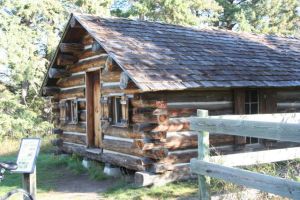 One of the first sites is Wegmann’s cabin, a replica of a log cabin that served as a general store for homesteaders in the area. It was built by one of the first homesteaders in the area, a couple who are now buried in the “pioneer’s cemetery” in the park.
One of the first sites is Wegmann’s cabin, a replica of a log cabin that served as a general store for homesteaders in the area. It was built by one of the first homesteaders in the area, a couple who are now buried in the “pioneer’s cemetery” in the park.
This site interested me as a reflection of what Michael Pollan talked about in his book, Second Nature, the battle in the US over how to treat and view “the natural.” For the original blog post on this topic, click here. Because, right next to the replica cabin built in the 1970s (to demonstrate classic log home building and preserve a sense of the original structure), is the original Wegmann’s cabin, now a ruin.
Because, well, we love an original. So even though it is just a mass of broken logs and windowsills, with pine trees growing up through it and a mass of weeds and brush, it is surrounded by a sturdy fence and “protected.” I don’t really get it. I can’t see the educational value or what can be learned in this little piece of vacant lot where nature has had its way. Except that it reflects a value system that says nature must “take its course,” even subsuming the man-made.
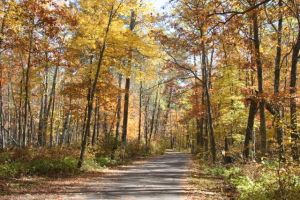 The entire park reflects this uncomfortable value. The park was heavily logged from 1901-1917, a brief period in which 44% of the park land was stripped of its old growth red and white pines. A 300+ year old white pine and red pine are fenced off and clearly marked for our viewing pleasure. And it is amazing to see these giants. But there are also groves of pines planted by the CCC and serving as forest management training areas for University of Minnesota students until recent decades. Now, however, we are told in the educational material, they are being left alone.
The entire park reflects this uncomfortable value. The park was heavily logged from 1901-1917, a brief period in which 44% of the park land was stripped of its old growth red and white pines. A 300+ year old white pine and red pine are fenced off and clearly marked for our viewing pleasure. And it is amazing to see these giants. But there are also groves of pines planted by the CCC and serving as forest management training areas for University of Minnesota students until recent decades. Now, however, we are told in the educational material, they are being left alone.
Presumably, the park rangers suppress fires, although we thought we saw some evidence of a controlled burn. The park is marked by blow-downs, and the park managers remove aspen trees, which are “invasive” (though beautiful). We also saw pine plantings and lots of deer fencing to give the young trees a chance. Most of the trees are pines (red, white and jack pine), spruce, and birches, with occasional stretches of maples and tamarack.
 The other main attraction is the headwaters of the Mississippi. In 1832, Anishinaabe guide Ozawindib led explorer Henry Schoolcraft to the source of the Mississippi River at Lake Itasca. It was on this journey that Schoolcraft, with the help of an educated missionary companion, created the name Itasca from the Latin words for “truth” and “head” (veritas caput).
The other main attraction is the headwaters of the Mississippi. In 1832, Anishinaabe guide Ozawindib led explorer Henry Schoolcraft to the source of the Mississippi River at Lake Itasca. It was on this journey that Schoolcraft, with the help of an educated missionary companion, created the name Itasca from the Latin words for “truth” and “head” (veritas caput).
 There is a dam at the site, a trickling stream, a footbridge and some signage. I have to admit it feels sort of arbitrary. One would prefer a bubbling spring, perhaps even a well of some sort with some kind of stone you could kiss (a la the Blarney stone) that shows water flowing into what will clearly be the Mississippi. Not, you know, a stream-fed lake.
There is a dam at the site, a trickling stream, a footbridge and some signage. I have to admit it feels sort of arbitrary. One would prefer a bubbling spring, perhaps even a well of some sort with some kind of stone you could kiss (a la the Blarney stone) that shows water flowing into what will clearly be the Mississippi. Not, you know, a stream-fed lake.
After Schoolcraft claimed the site, there were others who said the source was actually north, near Bemidji. In the late 19th century, Jacob V. Brower, historian, anthropologist and land surveyor, came to the park region to settle the dispute of the actual location of the Mississippi’s headwaters. Brower saw this region being quickly transformed by logging, and was determined to protect some of the pine forests for future generations. It was Brower’s tireless efforts to save the remaining pine forest surrounding Lake Itasca that led the state legislature to establish Itasca as a Minnesota State Park on April 20, 1891, by a margin of only one vote.
So was the dispute settled in order to provide a justification for saving trees? (with mixed results, given the logging of 1901-1917). I admit my research is very cursory, but I haven’t seen a good geological explanation of why this spot is the headwaters. The story is of a Native American guide, an explorer and missionary, an anthropologist and historian. Which are good characters for this story.
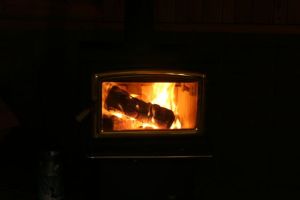 If you go, I highly recommend staying at Bert’s Cabins, which is actually in the park (though technically private land), run by a relative of the Wegmanns. The hosts, Pat and Dave, are extremely well suited to their work, and the place was clean and shiny, reasonably priced, and well situated for exploring the park. We also enjoyed the wood stove!
If you go, I highly recommend staying at Bert’s Cabins, which is actually in the park (though technically private land), run by a relative of the Wegmanns. The hosts, Pat and Dave, are extremely well suited to their work, and the place was clean and shiny, reasonably priced, and well situated for exploring the park. We also enjoyed the wood stove!



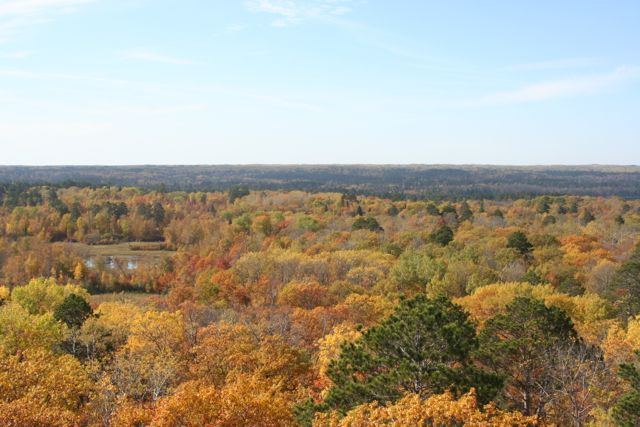
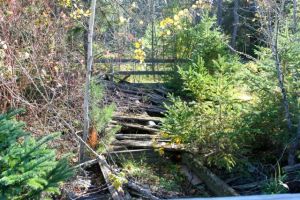
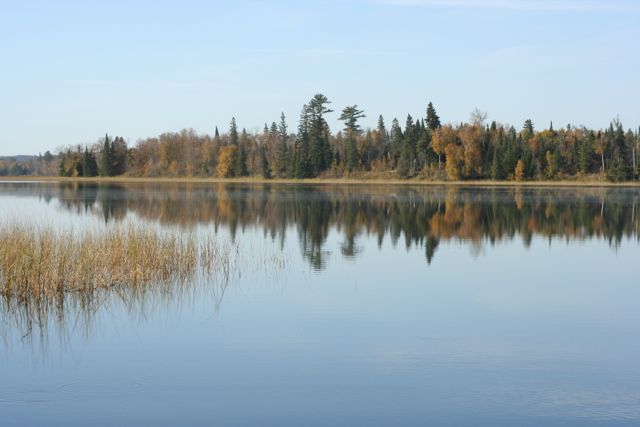
We just visited on Sunday! It is such a beautiful area and the Tamarack trees are now golden!
Thanks for the comment. It is such a great resource and a wonderful time of year to be up there. Glad you had a good visit– Sunday was the best weather of the week!
Lovely photo on your blog of the Tamaracks!
Thank you! It was a gorgeous day!